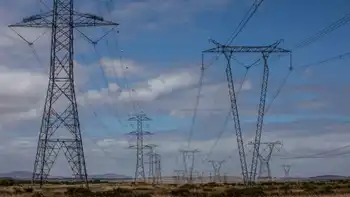Wash those dishes during off-peak hours
By Toronto Star
NFPA 70e Training
Our customized live online or in‑person group training can be delivered to your staff at your location.

- Live Online
- 6 hours Instructor-led
- Group Training Available
The cheapest rates? Weekends, holidays and the overnight period from 10 p.m. to 7 a.m.
Most expensive? At least in summer, during the heat of the day, from 11 a.m. to 5 p.m. (Winter peak periods are different, covering morning and early evening hours.)
The high peak rates are intended to prompt consumers to use power-hungry appliances such as washers, dryers and air conditioners as little as possible during peak demand times.
On very hot and very cold days, demand can outstrip supply, causing brownouts and blackouts. Expensive generating stations must be built to cover these short periods – and sit idle most of the year.
The 10,000 randomly selected customers in Etobicoke, Scarborough and North York who will go on time-of-use rates starting June 1 are the latest to move to a system that should be in use province-wide by the end of next year. Customers of Milton Hydro and Newmarket Hydro are already using their so-called "smart meters" in this way.
The Toronto customers will get their first bills reflecting the new rates as early as August, and all single-family households in the city should be on them within the year. Customers will be notified before they're switched to the new rates.
The city core will be the last, because the meters needed to record the precise time of day power is used are still being installed there.
The new rates won't affect households without smart meters, meaning most rental apartments and some condos. But 611,000 households already have them – about 85 per cent of single-family home customers.
Householders currently pay 5.7 cents per kilowatt hour for the first 600 kW/h per month in summer; 6.6 cents beyond that. For a typical household, using about 1,000 kW/h per month, that averages to a little over 6 cents. (That represents the energy portion of the bill, about half the total; the rest pays for the wires and operating the system.)
Under the new system, the price on weekends and overnight drops to 4.2 cents, but rises to 9.1 cents during the peak, and 7.6 cents at other times of the day.
Toronto Hydro estimates that the average family will pay about 1 per cent more, or $1.25, on their overall bill if they stick with their current patterns. Customers who change their behaviour, on the other hand, may be able to shave a few dollars off the bill.
An example: Running a dishwasher at 8 p.m. currently costs about 22 cents per load. Under the new mid-peak rate, it will cost about 27 cents. But if you turn it on after 10 p.m., it will cost only 15 cents.
So, running the dishwasher after 10 p.m. four weeknights each week will save about $1.20 a month compared with current rates, and about $2 a month based on the new rates.
Mayor David Miller heartily endorsed the new rates, which he said will discourage waste and allow consumers to lower their energy bills.
"It doesn't make sense to do your laundry at noon on a very hot day when everybody has their air conditioning on," Miller said.











